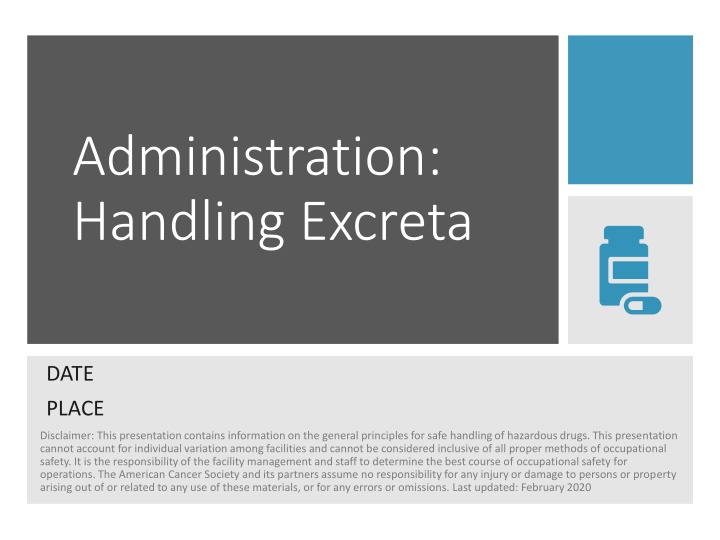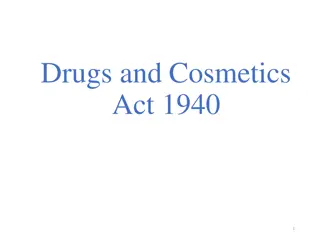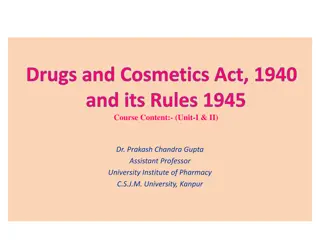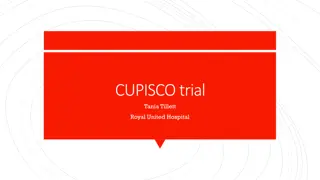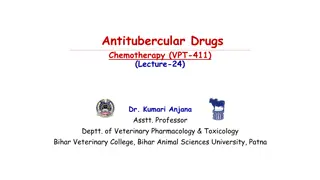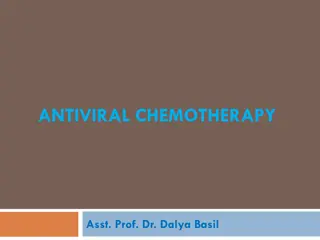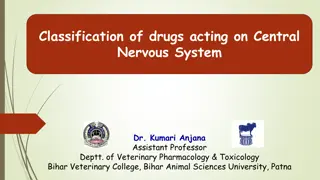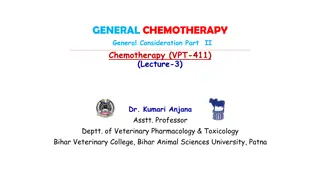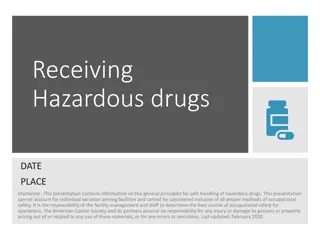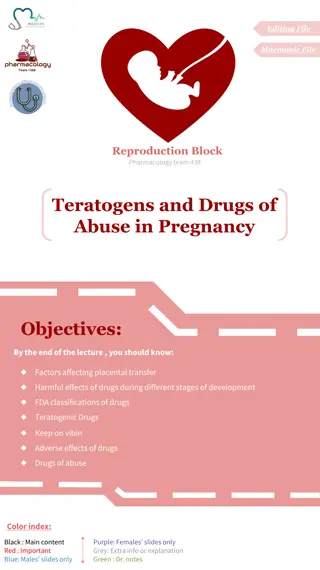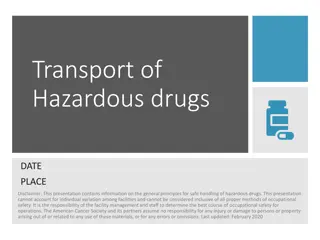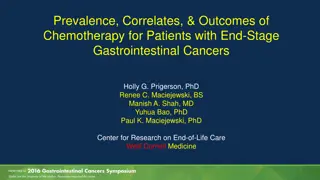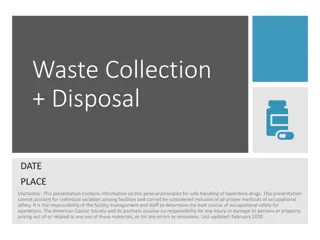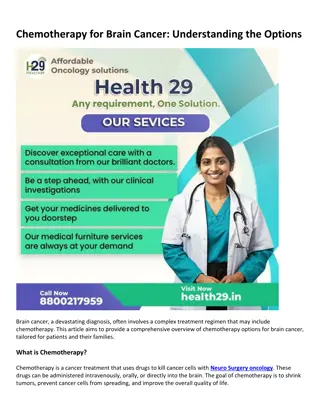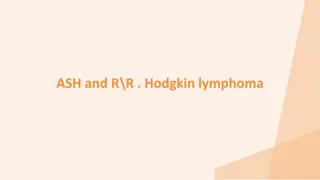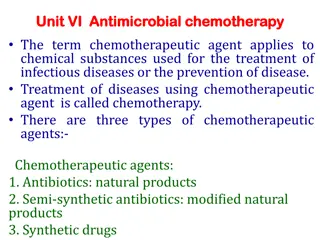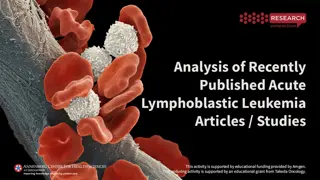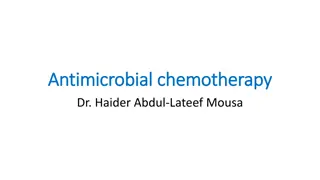Safe Handling of Chemotherapy Drugs
This presentation provides guidance on the safe handling of hazardous drugs, particularly in relation to managing patient excreta. It covers the use of personal protective equipment, precautions during collection and disposal, ways to reduce exposure, and the importance of following safe handling practices to minimize risks. Nurses, physicians, and other staff involved in administering chemotherapy drugs should take note of the recommended protocols outlined in this training module.
Download Presentation

Please find below an Image/Link to download the presentation.
The content on the website is provided AS IS for your information and personal use only. It may not be sold, licensed, or shared on other websites without obtaining consent from the author.If you encounter any issues during the download, it is possible that the publisher has removed the file from their server.
You are allowed to download the files provided on this website for personal or commercial use, subject to the condition that they are used lawfully. All files are the property of their respective owners.
The content on the website is provided AS IS for your information and personal use only. It may not be sold, licensed, or shared on other websites without obtaining consent from the author.
E N D
Presentation Transcript
Administration: Handling Excreta DATE PLACE Disclaimer: This presentation contains information on the general principles for safe handling of hazardous drugs. This presentation cannot account for individual variation among facilities and cannot be considered inclusive of all proper methods of occupational safety. It is the responsibility of the facility management and staff to determine the best course of occupational safety for operations. The American Cancer Society and its partners assume no responsibility for any injury or damage to persons or property arising out of or related to any use of these materials, or for any errors or omissions. Last updated: February 2020
Any staff who administer chemotherapy drugs. Who should take this training These staff may include physicians and nurses. 2
Training Modules + Learning Objectives Recognize the risk associated with human excreta of patients receiving chemotherapy. Overview Identify personal protective equipment (PPE) important for use when handling patient excreta. PPE Collection + Disposal Describe precautions that should be taken during collection and disposal. Explain the sequence of treatment. Ways to Reduce Exposure List general recommendations to reduce exposure to hazardous drugs (HDs). List ways to protect skin from contact with excreta. 3
When nurses do not follow safe handling precautions when handling excreta, they place themselves at risk for exposure. 5
Various amounts of chemotherapy and their metabolites are excreted in the urine, stool, sweat, vomit and other body excreta of patients. Most drugs, but not all, are excreted within 48 hours. 6 Reference 1,2,3
All personnel responsible for handling excreta, including urine, emesis, or feces from patients who have received HDs in the last 48 hours must wear PPE. Reference 1,5
A chemotherapy gown and two pairs of nitrile gloves, should be worn 9 This Photo by Unknown Author is licensed under CC BY-NC-ND Reference 1
A face-shield should be worn if splashing is likely Reference 1
Collection + Disposal
If possible, there should be toilets dedicated for the use of patients receiving chemotherapy. In order to reduce or eliminate the risk of splashing and aerosolization, men should be instructed to be seated when urinating. Reference 6 12
Disposable items, such as bed pans and urinals, should be used in preference to re- usable products. When re-usable items are used, they should be rinsed twice following use. This Photo by Unknown Author is licensed under CC BY-SA Reference 6 13
Closed systems for collection of body fluids should be disposed intact. Reference 6 14
Additional Precautions
Some chemotherapies are secreted in breast milk: Breastfeeding mothers receiving chemotherapy should immediately consult with the oncologist and obstetrician. Lactating mothers should also avoid working in high- risk chemotherapy areas. 16 Reference 1,7
Ways to Reduce Exposure
Nurses should consider ways to reduce exposure to contaminated excreta:
Use patients weight rather than intake and output to monitor fluid status. Weigh urinary output collected in drainage bags rather that measuring volume to reduce the risk of splashing. Encourage men to sit on the toilet seats rather than standing to reduce the risk of droplet contamination. Reference 1 19
Encourage the use of toilets instead of bedpans and urinals, when feasible, to decrease the possibility of spillage and the need for health workers to handle contaminated urine. Collect drainage of pleural, peritoneal and other body fluids in a closed system that can be disposed of. Use disposable ostomy pouches rather than rinsing and reusing them. Reference 1 20
Protect the skin of incontinent patients from their own excreta as it might damage their skin 21 Reference 1
Ways to protect skin: Clean the skin with water and soap and apply a moisture barrier to the perineal and perirectal areas following each incontinent period of urine and stool. Use a plastic-backed disposable pad under incontinent patients to provide a barrier to the linen and bed. Use a clean disposable diaper. Reference 1 22
Ways to protect skin: A Foley catheter for patients with urine incontinence. Contain and dispose of contaminated PPE. Use a vacutainer system when collecting blood samples. 23
References 1. Polovich M, Olsen M, editors. Safe handling of hazardous drugs. Oncology Nursing Society; 2018. 2. Polovich M, Olsen M, LeFebvre K. Chemotherapy and biotherapy guidelines and recommendations for practice. 4th ed. Oncology Nursing Society; 2014. 3. ASHP (American Society of Health System Pharmacists). Guidelines on handling hazardous drugs. Am J Health Syst Pharm. 2006;63:1172 93 4. Connor TH, McDiarmid MA. Preventing Occupational Exposures to Antineoplastic Drugs in Health Care Settings. CA Cancer J Clin. 56(6):354 65. 5. United States Occupational Safety and Health Administration. Controlling Occupational Exposure to Hazardous Drugs [Internet]. [cited 2018 May 5]. 6. Connor T, McLauchlan R, Vandenbroucke J. ISOPP Standards of Practice: Safe Handling of Cytotoxics. J Oncol Pharm Pract. 2007;13(1) 7. Gilani S, Giridharan S. Is it safe for pregnant health-care professionals to handle cytotoxic drugs? A review of the literature and recommendations. ecancermedicalscience [Internet]. 2014 Apr 10 [cited 2018 Jul 23];8. 24
